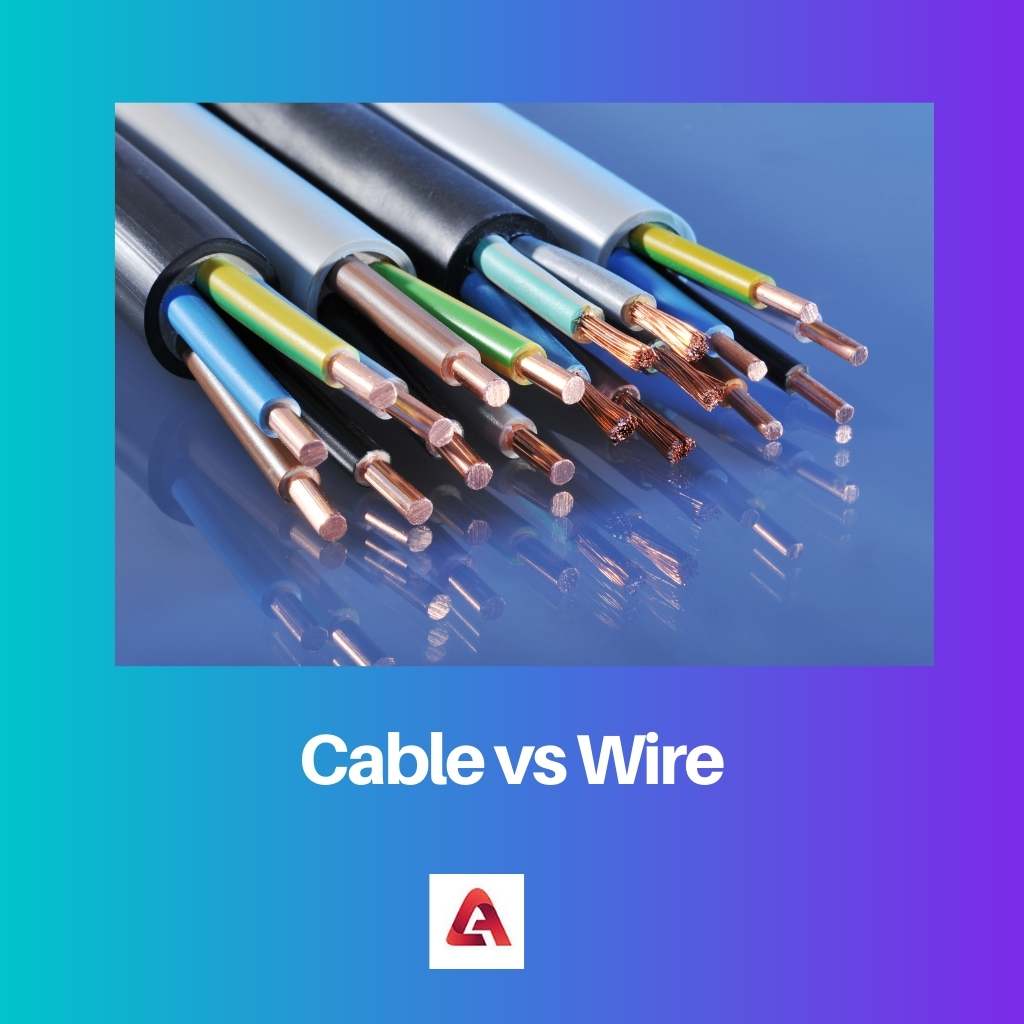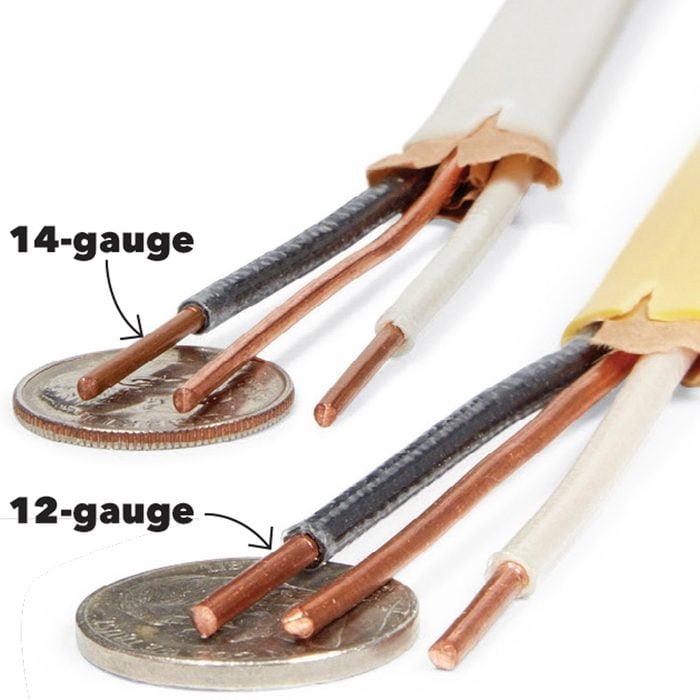Lessons I Learned From Info About What Is Cable Vs Wire

Fibre Optic Vs Copper Cables The Differences And Benefits
Cable vs. Wire
1. What's the Real Difference?
Ever stared at a tangled mess of wires and cables behind your TV, wondering if there's actually a difference between the two? You're not alone! The terms are often used interchangeably, which can make things incredibly confusing. But fear not, intrepid electronics explorer! We're here to shed some light on this tangled topic.
Think of it this way: a wire is like a single strand of cooked spaghetti, and a cable is like a whole plate of spaghetti, all bundled together. A wire is simply a single conductor of electricity — usually made of copper or aluminum. It's the basic building block. A cable, on the other hand, is a group of two or more wires wrapped together in a protective sheath.
That sheath is key! It provides insulation and protection from things like moisture, abrasion, and even electromagnetic interference. Imagine trying to use those individual strands of spaghetti to build a sturdy bridge — it wouldn't work! The cable's outer layer gives it the strength and resilience to handle the job.
So, while all cables contain wires, not all wires are cables. It's like squares and rectangles all over again. Consider the simple lamp cord. It's technically a cable because it has at least two insulated wires inside a plastic jacket. A single strand of copper used to wire a circuit board? That's a wire.
![Difference Between Twisted Paircable And Coaxial Cable [in Table] Difference Between Twisted Paircable And Coaxial Cable [in Table]](https://d1avenlh0i1xmr.cloudfront.net/d10d74fa-52bf-4de9-b733-18f5d6c5343d/twisted-pair-cable-vs-coaxial-cable---teachoo.jpg)
Difference Between Twisted Paircable And Coaxial Cable [in Table]
Digging Deeper
2. Bare vs. Insulated
Wires come in a couple of flavors: bare and insulated. Bare wires are just the conductive material, exposed to the elements. You might see these used as grounding wires, where they need to make a direct connection to earth. But most of the time, wires are insulated with a plastic or rubber coating.
This insulation is super important for safety. It prevents short circuits by keeping the electricity flowing only where it's supposed to. Plus, it protects you from getting shocked if you accidentally touch a live wire. Nobody wants a jolt of unexpected energy!
Wire gauge is another important thing to consider. The gauge refers to the wire's thickness, and it's measured using the American Wire Gauge (AWG) system. A smaller gauge number means a thicker wire, which can carry more current. Choosing the right gauge is crucial for ensuring your electrical circuits work safely and efficiently.
Think of it like pipes carrying water. A thin pipe can only handle so much water pressure before it bursts. Similarly, a thin wire can overheat and potentially start a fire if it's carrying too much electricity. Always consult electrical codes and guidelines to choose the appropriate wire gauge for your specific application.

Cable Construction
3. Shielding and Jacketing
Cables are all about protection and organization. They take multiple wires and bundle them together, often adding extra layers of shielding and jacketing for enhanced durability and performance. This is especially important for cables that are exposed to harsh environments or need to transmit sensitive signals.
Shielding is usually made of braided metal or foil, and it's designed to block electromagnetic interference (EMI) and radio frequency interference (RFI). These types of interference can disrupt the signals traveling through the wires, leading to data loss or signal degradation. Shielded cables are commonly used in audio and video applications, where signal clarity is paramount.
The outer jacket of a cable is the first line of defense against physical damage. It's typically made of a tough, flexible material like PVC or polyethylene. The jacket protects the inner wires from abrasion, moisture, chemicals, and extreme temperatures. Some cables even have specialized jackets that are fire-resistant or UV-resistant.
The specific construction of a cable depends on its intended use. For example, a coaxial cable used to transmit television signals has a very different design than a power cable used to deliver electricity to your home. Understanding the different types of cables and their construction is essential for choosing the right cable for the job.

Electrical Wire Size
Applications
4. From Homes to High-Tech
Wires and cables are everywhere! From the wiring in your home to the intricate circuitry in your smartphone, they're the unsung heroes of modern technology. Let's take a look at some common applications.
In residential wiring, cables are used to distribute electricity throughout the house. These cables typically contain multiple insulated wires for different circuits, such as lighting, outlets, and appliances. Wires are also used within appliances and devices to connect various components.
In telecommunications, cables are used to transmit data and voice signals over long distances. Fiber optic cables, which use light to transmit data, are becoming increasingly common due to their high bandwidth and low signal loss. These cables are used in everything from internet connections to telephone networks.
Even in the automotive industry, wires and cables play a critical role. They're used to connect sensors, actuators, and other electronic components throughout the vehicle. As cars become more technologically advanced, the demand for reliable and high-performance wiring systems is only going to increase.

Choosing the Right Wire or Cable
5. Matching the Right Tools for the Job
So, how do you choose the right wire or cable for your project? It all comes down to understanding your specific needs and requirements. Consider factors like the voltage and current requirements, the environment in which the wire or cable will be used, and any applicable safety regulations.
For low-voltage applications, such as connecting LED lights or sensors, you can typically use thinner gauge wires. For high-voltage applications, such as wiring an appliance or running power to a detached garage, you'll need thicker gauge cables that can handle the higher current load.
If you're working in a damp or corrosive environment, be sure to choose a cable with a moisture-resistant or chemical-resistant jacket. And if you're running cables outdoors, opt for UV-resistant cables that won't degrade in the sunlight.
Always consult with a qualified electrician if you're unsure about which wire or cable to use for a particular application. They can help you ensure that your wiring is safe, reliable, and compliant with all applicable codes and regulations. After all, a little bit of planning can save you a whole lot of trouble down the road!
